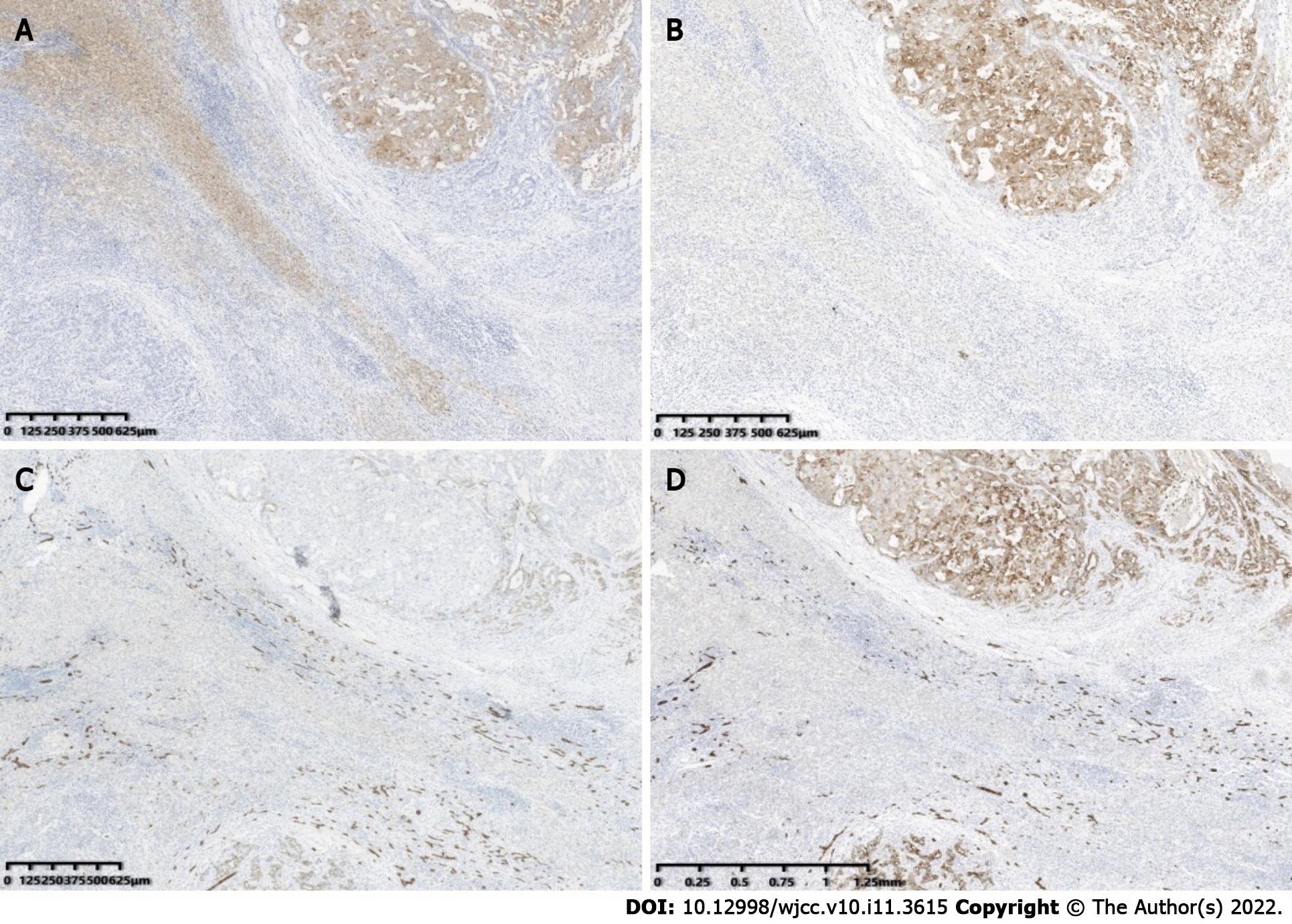Copyright
©The Author(s) 2022.
World J Clin Cases. Apr 16, 2022; 10(11): 3615-3623
Published online Apr 16, 2022. doi: 10.12998/wjcc.v10.i11.3615
Published online Apr 16, 2022. doi: 10.12998/wjcc.v10.i11.3615
Figure 1 Contrast enhanced computed tomography and ultrasound images of a liver lesion in S4.
A: A slightly low-density nodule measuring 2.1 cm × 2.0 cm was detected in liver S4 (A, arrow) on unenhanced computed tomography; B and C: The nodule showed marked enhancement in the arterial phase (B, arrow) followed by isoenhancement in the portal venous phase (C, arrow); D and E: The nodule presented a hypoechoic lesion with a clear boundary and regular shape (D, arrow) on conventional ultrasound; the color Doppler showed punctate blood flow signal (E, arrow) in the peripheral area of the lesion; F-H: On contrast enhaned ultrasound, the lesion manefested homogeneous hyperenhancement (F, arrow), followed by mild hyperenhancement in the portal venous phase (G, arrow) and hypoenhancement in the late phase (H, arrow); I: Postoperative pathology confirmed this lesion as being a poorly differentiated hepatocellular carcinoma (hematoxylin-eosin staining).
Figure 2 Contrast enhanced computed tomography and ultrasound images of a liver lesion in S6.
A: A low-density nodule measuring 3.0 cm × 2.7 cm was detected in liver S6 (A, arrow) on unenhanced computed tomography (CT); B and C: The lesion showed rim hyperenhancement in the arterial phase (B, arrow) followed by hypoenhancement (C, arrow) in the portal venous phase on contrast enhanced CT; D and E: The lesion presented a hypoechoic nodue with an unclear boundary and irregular shape (D, arrow); a sparse of blood flow was detected by color Doppler (E, arrow); F-H: The lesion manefested rapid rim hyperenhancement (F, arrow) and early washout (G, arrow) in the arterial phase, followed by marked washout in the late phase on contrast enhanced ultrasound.
Figure 3 The nodule in liver S6 confirmed to be a combined hepatocellular-cholangiolocarcinoma by pathology.
A: A distinct transitional zone was observed between the hepatocellular carcinoma (white arrow) and cholangiolocarcinoma (orange arrow) tissues (original magnification); B: Hepatocellular carcinoma cells huddled between the trabecular in disarray; C: Cholangiolocarcinoma consisted of neoplastic cells with marked pleomorphism.
Figure 4 Immunohistochemical analysis of the nodule in liver S6.
A and B: Arg (A) and GPC-3 (B) were highly expressed in hepatocellular carcinoma tissues; C and D: CK7 (C) and CK19 (D) were expressed in Cholangiolocarcinoma tissues, respectively.
Figure 5 A recurrent tumor in liver S1 was found by contrast enhanced imaging modalities 7 mo after operation.
A: The nodule showed mild annular enhancement on contrast enhanced computed tomography; B and C: The lesion manifested peripherial hyperenhancement (B, arrow) in the arterial phase and hypoenhancement in the portal venous phase (C, arrow) on contrast enhanced ultraound.
- Citation: Gao L, Huang JY, Lu ZJ, Lu Q. Contrast-enhanced ultrasound manifestations of synchronous combined hepatocellular-cholangiocarcinoma and hepatocellular carcinoma: A case report. World J Clin Cases 2022; 10(11): 3615-3623
- URL: https://www.wjgnet.com/2307-8960/full/v10/i11/3615.htm
- DOI: https://dx.doi.org/10.12998/wjcc.v10.i11.3615

















